Are you concerned about the safety of your feline friend around pom poms? If so, you’re not alone! Many cat owners have become increasingly worried for their cats and other small pets, since there were reports that these fluffy decorations may contain toxic materials.
But don’t worry – we’ve got the answers to all your unanswered questions; from what a pom is made of, to whether or not it’s actually dangerous for cats.
So keep reading if you want to uncover the truth behind this seemingly-harmless but potentially hazardous home decor item: Is it really poisonous to cats?
What is the Deadliest Flower on Earth?
While all animals should be kept away from oleander, cats are especially sensitive and can even die from eating just a few leaves.
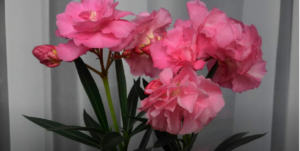
So it’s important to keep your cats away from this deadly flower, as well as any other plants that may be toxic for them. Other dangerous flowers include lily of the valley, foxglove, and yew.
It’s best to research any new plants you bring into your home to make sure they’re not poisonous to cats.
Are Poms Poisonous?
No, poms are not poisonous to cats. These decorations consist of small pieces of artificial fur or yarn and are considered non-toxic materials. They also don’t pose any choking hazards, as long as they’re kept away from pets so that they don’t ingest them.
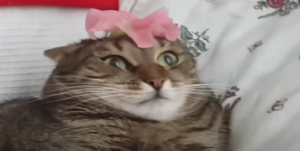
However, if a pet does happen to swallow some of the material, it could cause problems with their digestion. [1]
Are Pom Flowers Safe For Cats?
Yes, pom flowers are safe for cats. These decorations consist of small pieces of artificial fur or yarn which make them non-toxic and safe for cats to be around.
They don’t pose any choking hazards either, provided that they’re kept away from pets so that they don’t ingest them.
Poms can also make great interactive toys for cats, since they often find the material intriguing and fun to play with. Just make sure to keep an eye on your pet while they’re playing with their new toy!
How Does The Vet Treat Cyanide Poisoning?
If you suspect that your cat has been exposed to cyanide, it’s important to seek veterinary care immediately.
[1]What Happens When A Cat Eats A Pom?
If a cat eats a pom, they will most likely suffer no ill effects. As mentioned before, these decorations are not considered toxic or dangerous to cats and they don’t pose any choking hazards either.
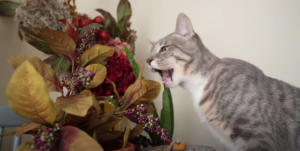
However, it’s still important to keep an eye on your pet after they’ve eaten the material in case they experience any digestive issues. If you notice any unusual behaviour in your cat, it’s best to take them to the vet for a check-up.
Which Flowers Are Not Poisonous To Cats?
Fortunately, there are many flowers that are not poisonous to cats. Some of the most popular options include gerbera daisies, carnations, snapdragons, bouvardia, and English ivy.
It’s important to keep in mind that some plants may still contain certain toxins which could cause gastrointestinal discomfort or other adverse reactions in cats.
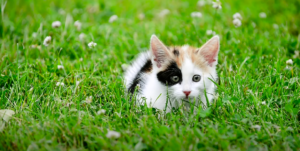
Be sure to research any new plants before bringing them into your home so you can make sure they’re safe for your pet.
Is a bouquet of flowers toxic to cats?
No, a bouquet of flowers is not normally toxic to cats. While some varieties of plants can be dangerous if ingested, most types of cut flowers are relatively safe for cats. Be sure to research any new plants before bringing them into your home so you can make sure they’re safe for your pet.
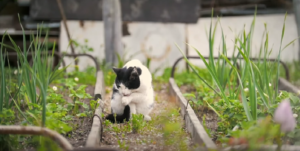
Additionally, it’s important to keep an eye on your cat when they’re around flowers, as some varieties may still contain certain toxins which could cause gastrointestinal discomfort or other adverse reactions.
If you notice any unusual behaviour in your pet, it’s best to take them to the vet for a check-up.
What flowers should cats stay away from?
Cats should stay away from flowers such as lilies, tulips, daffodils, foxgloves, and azaleas. These flowers are highly toxic to cats and can cause severe health issues if ingested.
Additionally, keep an eye on your cat when they’re around any other type of flower to make sure they don’t eat any of it. If you notice any unusual behaviour in your pet, it’s best to take them to the vet for a check-up. [2]
Can you have flowers in the house with cats?
Yes, you can have flowers in the house with cats, as long as you make sure to research any new plants before bringing them into your home.

Additionally, it’s important to keep an eye on your cat when they’re around flowers, as some varieties may still contain certain toxins which could cause gastrointestinal discomfort or other adverse reactions.
If you notice any unusual behaviour in your pet, it’s best to take them to the vet for a check-up.
Which plants are most toxic to cats?
These flowers contain a variety of toxins which can be fatal if ingested.
Additionally, some other plants may still contain certain toxins which could cause gastrointestinal discomfort or other adverse reactions in cats.
FAQ
Are daisy poms toxic to cats?
No, daisy poms are not considered toxic or dangerous to cats and they don’t pose any choking hazards either. If a cat eats a pom, they will most likely suffer no ill effects.
However, it’s still important to keep an eye on your pet after they’ve eaten the material in case they experience any digestive issues. If you notice any unusual behaviour in your pet, it’s best to take them to the vet for a check-up.
Are dried flowers poisonous to cats?
No, dried flowers are not normally toxic to cats. However, keep an eye on your cat when they’re around any type of flower to make sure they don’t eat any of it.
Additionally, some plants may still contain certain toxins which could cause gastrointestinal discomfort or other adverse reactions in cats.
Are hydrangeas poisonous to cats?
Yes, hydrangeas can be toxic to cats and can cause gastrointestinal upset if ingested. Additionally, some hydrangeas may also contain toxins which could cause more severe health issues, so it’s important to keep an eye on your pet when they’re around any type of flower.
If you notice any unusual behaviour in your pet, it’s best to take them to the vet for a check-up.
Are pom poms poisonous to cats?
No, pom poms are not considered toxic or dangerous to cats and they don’t pose any choking hazards either. If a cat eats a pom, they will most likely suffer no ill effects.
However, it’s still important to keep an eye on your pet after they’ve eaten the material in case they experience any digestive issues. If you notice any unusual behaviour in your pet, it’s best to take them to the vet for a check-up.
Are mums toxic to cats?
Yes, mums can be toxic to cats and can cause gastrointestinal upset if ingested. Additionally, some mums may also contain toxins which could cause more severe health issues, so it’s important to keep an eye on your pet when they’re around any type of flower.
What is the most toxic flower to cats?
The most toxic flower to cats is the lily. Lilies contain a variety of toxins which can be fatal if ingested, so it’s important to keep them away from your cats at all times.
Additionally, some other plants may still contain certain toxins which could cause gastrointestinal discomfort or other adverse reactions in cats.
It’s best to research any new plants before bringing them into your home, and keep an eye on your pet when they’re around flowers. If you notice any unusual behaviour in your pet, it’s best to take them to the vet for a check-up.
Are Viking poms toxic to cats?
No, Viking poms are not considered toxic or dangerous to cats and they don’t pose any choking hazards either. If a cat eats a pom, they will most likely suffer no ill effects.
However, it’s still important to keep an eye on your pet after they’ve eaten the material in case they experience any digestive issues. If you notice any unusual behaviour in your pet, it’s best to take them to the vet for a check-up.
Are any flowers 100% cat safe?
No, there is no flower that can be considered 100% safe for cats. Even seemingly harmless flowers may contain certain toxins which could cause gastrointestinal discomfort or other adverse reactions in cats.
It’s best to research any new plants before bringing them into your home, and keep an eye on your pet when they’re around flowers. If you notice any unusual behaviour in your pet, it’s best to take them to the vet for a check-up.
What is the most toxic house plant for cats?
The most toxic house plant for cats is the Dieffenbachia. This plant contains a variety of toxins which can be fatal if ingested, so it’s important to keep them away from your cats at all times.
Additionally, some other plants may still contain certain toxins which could cause gastrointestinal discomfort or other adverse reactions in cats.
It’s best to research any new plants before bringing them into your home, and keep an eye on your pet when they’re around flowers.
What other plants should I avoid giving to my cat?
In general, it’s best to avoid giving your cat any type of plant that is known to be toxic or poisonous for cats. This includes lilies, dieffenbachia, hydrangeas, mums, and daffodils.
Additionally, some household items such as rubber bands, ribbon, and string can be dangerous to cats if ingested.
It’s important to keep an eye on your pet at all times and make sure that they aren’t consuming any type of material that could potentially harm them.
What should I do if my cat eats something toxic or poisonous?
If your cat has eaten anything that you suspect may be toxic or poisonous, it’s important to seek medical help immediately.
Call your local veterinarian or emergency animal hospital for advice on what to do next. Additionally, make sure to keep an eye on your pet and look out for any signs of distress.
How can I keep my cat safe from toxic plants?
The best way to keep your cat safe from toxic plants is to research any new plants before bringing them into your home, and make sure that they are not considered poisonous or dangerous for cats.
Additionally, it’s important to keep an eye on your pet when they’re around flowers and make sure that they aren’t consuming anything that could potentially harm them.
How can I protect my cats from other household hazards?
It’s important to be aware of common household hazards that can be dangerous for cats. Some items, such as rubber bands and string, should be kept out of reach of pets as they pose a choking hazard.
Additionally, items like cleaners and detergents should also be stored safely away from cats. Finally it’s important to keep an eye on your pet at all times and make sure that they aren’t consuming any type of material that could potentially harm them.
How can I tell if my cat has ingested something toxic or poisonous?
If you suspect that your cat may have ingested something toxic or poisonous, it’s important to watch for any signs of distress. Some common symptoms include vomiting, lethargy, loss of appetite, and diarrhoea.
How can I make sure my cat is safe in the future?
The best way to ensure your cat’s safety in the future is to research any new plants before bringing them into your home, and make sure that they are not considered poisonous or dangerous for cats.
Additionally, it’s important to keep an eye on your pet when they’re around flowers and make sure that they aren’t consuming anything that could potentially harm them. Lastly, it’s important to keep hazardous materials such as cleaners and detergents stored safely away from cats.
Why is it important to keep my cat away from toxic plants?
It’s important to keep your cat away from toxic plants because some of these plants can be fatal if ingested. Additionally, some other plants may contain certain toxins which could cause gastrointestinal discomfort or other adverse reactions in cats.
By researching any new plants before bringing them into your home and keeping an eye on your pet when they’re around flowers, you can help ensure their safety.
Does my cat need to be treated if they ingested a toxic plant?
Yes, it’s important to seek medical help immediately if you suspect your cat has ingested anything that may be poisonous or toxic.
Call your local veterinarian or emergency animal hospital for advice on what to do next and make sure to keep an eye on your pet for any signs of distress.
Does my cat need to be monitored for any adverse effects after consuming a toxic plant?
Yes, it’s important to monitor your cat for any signs of distress or adverse reactions after they have consumed a toxic plant. Some common symptoms include vomiting, lethargy, loss of appetite, and diarrhoea. If you notice any of these signs, seek medical help immediately.
Do all toxic plants have a negative effect on cats?
No, not all toxic plants will have a negative effect on cats. Some of these plants may not be considered dangerous or poisonous to cats, but it’s important to do your research before bringing any new plants into your home.
Additionally, make sure to keep an eye on your pet and look out for any signs of distress should they consume something that could potentially harm them.
Does my cat need to be monitored if they ate a Pomeranian?
No, Pomeranians are generally not dangerous or poisonous to cats. However, it is important to keep an eye on your pet and make sure that they are not consuming anything that could potentially harm them.
Additionally, it’s important to research any new plants before bringing them into your home to ensure that they are not considered toxic or dangerous.
Do cats need to be monitored if they eat rubber bands or string?
Yes, it is important to keep an eye on your cat if they’ve ingested any type of material such as rubber bands or string. These items pose a choking hazard and can cause intestinal blockage if swallowed.
If you suspect that your cat may have ingested something potentially dangerous, seek medical help immediately.
What can I do if my cat ingested something toxic or poisonous?
If you suspect that your cat has ingested something toxic or poisonous, it is important to seek medical help immediately. Call your local veterinarian or emergency animal hospital for advice on what to do next and make sure to keep an eye on your pet for any signs of distress.
Additionally, make sure to store any hazardous materials such as cleaners and detergents away from cats in the future to ensure their safety.
Does my cat need to be monitored if they ate a Pomeranian?
No, Pomeranians are generally not dangerous or poisonous to cats. However, it is important to keep an eye on your pet and make sure that they are not consuming anything that could potentially harm them.
Additionally, it’s important to research any new plants before bringing them into your home to ensure that they are not considered toxic or dangerous.
Do cats need to be monitored if they eat rubber bands or string?
Yes, it is important to keep an eye on your cat if they’ve ingested any type of material such as rubber bands or string. These items pose a choking hazard and can cause intestinal blockage if swallowed.
If you suspect that your cat may have ingested something potentially dangerous, seek medical help immediately.
Does my cat need to be monitored after eating a toxic plant?
Yes, it’s important to monitor your cat for any signs of distress or adverse reactions after they have consumed a toxic plant. Some common symptoms include vomiting, lethargy, loss of appetite, and diarrhoea.
If you notice any of these signs, seek medical help immediately. Additionally, make sure to store any hazardous materials such as cleaners and detergents away from cats in the future to ensure their safety.
Do all toxic plants have a negative effect on cats?
No, not all toxic plants will have a negative effect on cats. Some of these plants may not be considered dangerous or poisonous to cats, but it’s important to do your research before bringing any new plants into your home.
Additionally, make sure to keep an eye on your pet and look out for any signs of distress should they consume something potentially harmful.
Are there plants I can bring into my home that are safe for cats?
Yes, there are a variety of plants that you can bring into your home that are considered safe for cats. Some popular choices include catnip, basil, thyme, and oregano.
Additionally, many stores now offer a range of cat-safe plants that are specifically designed to be both safe and enjoyable for cats.
Does my cat need to be monitored if they ate a Pomeranian?
No, Pomeranians are generally not dangerous or poisonous to cats. However, it is important to keep an eye on your pet and make sure that they are not consuming anything that could potentially harm them.
Additionally, it’s important to research any new plants before bringing them into your home to ensure that they are not considered toxic or dangerous.
What can I do if my cat ingested something toxic or poisonous?
If you suspect that your cat has ingested something toxic or poisonous, it is important to seek medical help immediately. Call your local veterinarian or emergency animal hospital for advice on what to do next and make sure to keep an eye on your pet for any signs of distress.
Additionally, make sure to store any hazardous materials such as cleaners and detergents away from cats in the future to ensure their safety.
Can I feed my cat Pomeranians?
No, it is not recommended to feed your cat a Pomeranian. While they are not dangerous or poisonous to cats, they are not suitable for their diet and can cause an upset if eaten.
Additionally, many of the ingredients found in commercially available dog food can be harmful to cats, so it is important to ensure that you are only feeding your cat food specifically designed for their species.
Can I give my cat treats that contain Pomeranians?
No, it is not recommended to feed your cat treats containing Pomeranians. While they are not dangerous or poisonous to cats, they are not suitable for their diet and can cause an upset if eaten.
Additionally, many of the ingredients found in commercially available dog food can be harmful to cats, so it is important to ensure that you are only feeding your cat treats specifically designed for their species.
Can I give my cat supplements that contain Pomeranians?
No, it is not recommended to give your cat supplements containing Pomeranians. While they are not dangerous or poisonous to cats, they are not suitable for their diet and can cause an upset if consumed.
Additionally, many of the ingredients found in commercially available dog food can be harmful to cats, so it is important to ensure that you are only giving your cat supplements specifically designed for their species.
Can I give my cat toys with Pomeranians in them?
Yes, you can give your cat toys that contain Pomeranians. However, it is important to make sure that the toy does not have small parts that could be chewed off and ingested by the cat.
Additionally, make sure to regularly inspect the toy for any signs of wear and tear that could make it unsafe for your pet.
Can I give my cat grooming products with Pomeranians in them?
Yes, you can use grooming products that contain Pomeranians on your cat. However, be sure to read the instructions carefully and follow any safety guidelines before using a product on your pet.
Additionally, make sure to regularly inspect your cat for any signs of adverse reactions or irritation that could be caused by the product.
Which types of Pomeranians are safe for cats?
All types of Pomeranians are generally considered safe for cats. However, it is important to research any new plants before bringing them into your home to ensure that they are not considered toxic or dangerous.
Additionally, when choosing a plant for your cat’s environment, make sure to select one that is not hazardous and has a high tolerance for cats.
Can I give my cat treats made with Pomeranians?
Yes, you can feed your cat treats that contain Pomeranians. However, it is important to check the ingredients list and make sure that no other potentially harmful ingredients are included.
Which type of Pomeranians are most popular among cats?
Different types of Pomeranians can be popular among cats for different reasons. For example, some cats may prefer the taste and texture of certain types of Pomeranians, while others may enjoy the bright colours or unique shapes they come in.
Additionally, some cats may be drawn to certain types of Pomeranians due to the aroma or texture they offer. Ultimately, there is no single type of Pomeranian that is most popular among cats; it will ultimately depend on your pet’s preferences.
Are there any special considerations for feeding my cat Pomeranians?
Yes, it is important to keep a few things in mind when feeding your cat Pomeranians. Firstly, you should always make sure that the Pomeranians are freshly prepared and have not been stored for too long.
Additionally, it is important to check the ingredients list and make sure that no other potentially harmful ingredients are included.
Lastly, as with any type of food, it is important to give your cat small portions and monitor them for any signs of adverse reactions or upset stomachs.
Useful Video: Plants That Are Toxic to Cats!!
Conclusion
The cost of a sand cat is not something to take lightly – especially if you’re looking for one to become part of your family. It can be expensive, but with the proper research, shopping around and adopting instead of buying from a breeder, you can save yourself quite a bit in the long run.
But most importantly, these animals are worth the cost because they will bring you so much joy if taken care of properly and treated with love. Sand cats are amazing creatures that everyone should have the opportunity to experience.
So if you’ve been considering bringing home one of these unique felines, don’t let money stand in your way – it could be the best investment of your life!
References:
- https://kittydevotees.com/2022/05/22/are-poms-poisonous-to-cats/
- https://www.hyaenidae.org/are-pom-flowers-safe-for-cats/

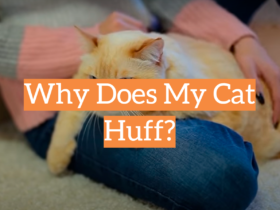
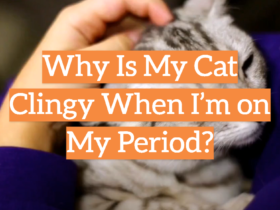
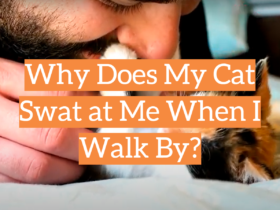
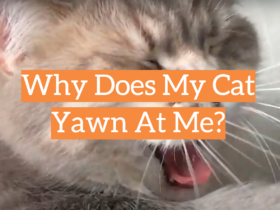
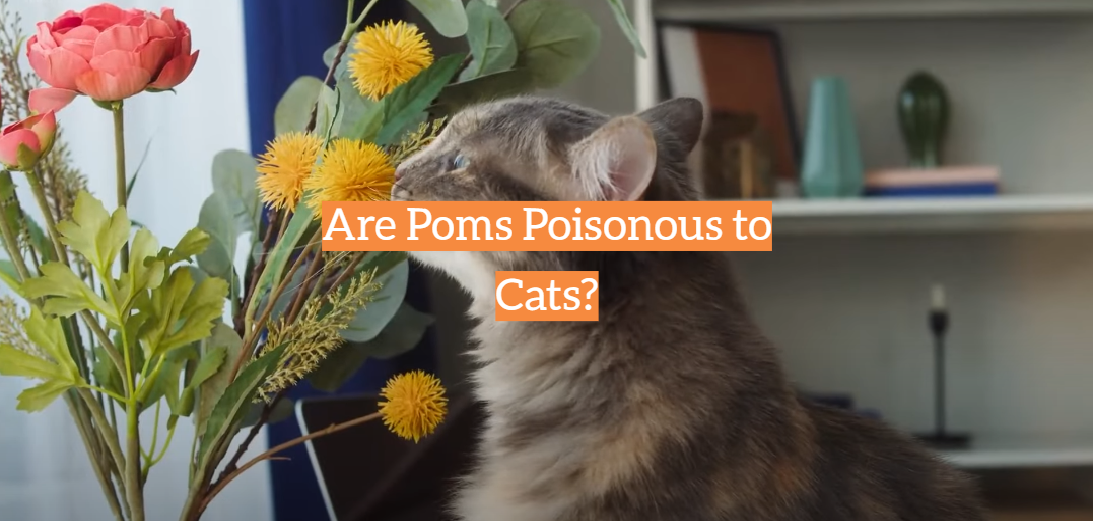
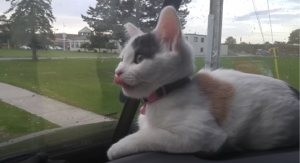
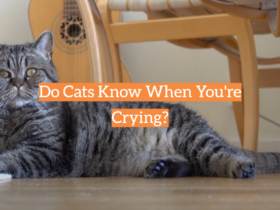
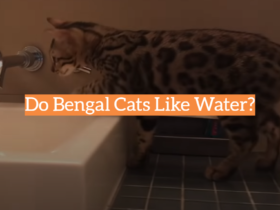


Leave a Reply